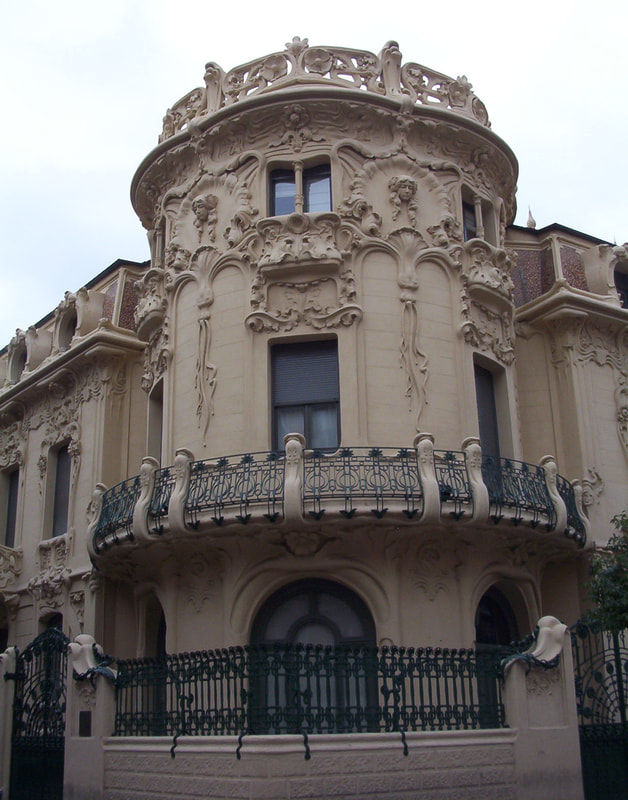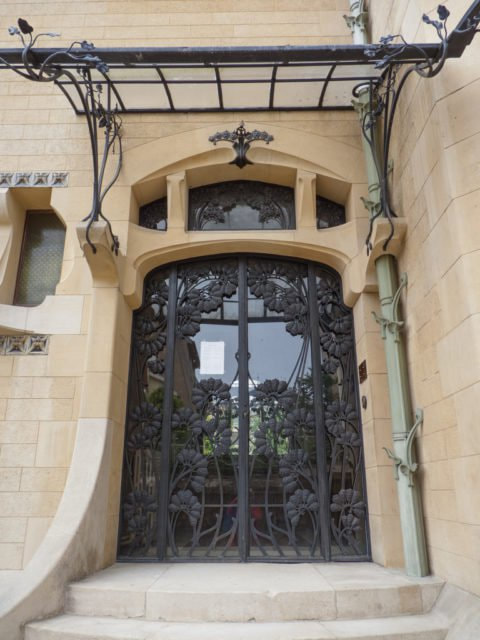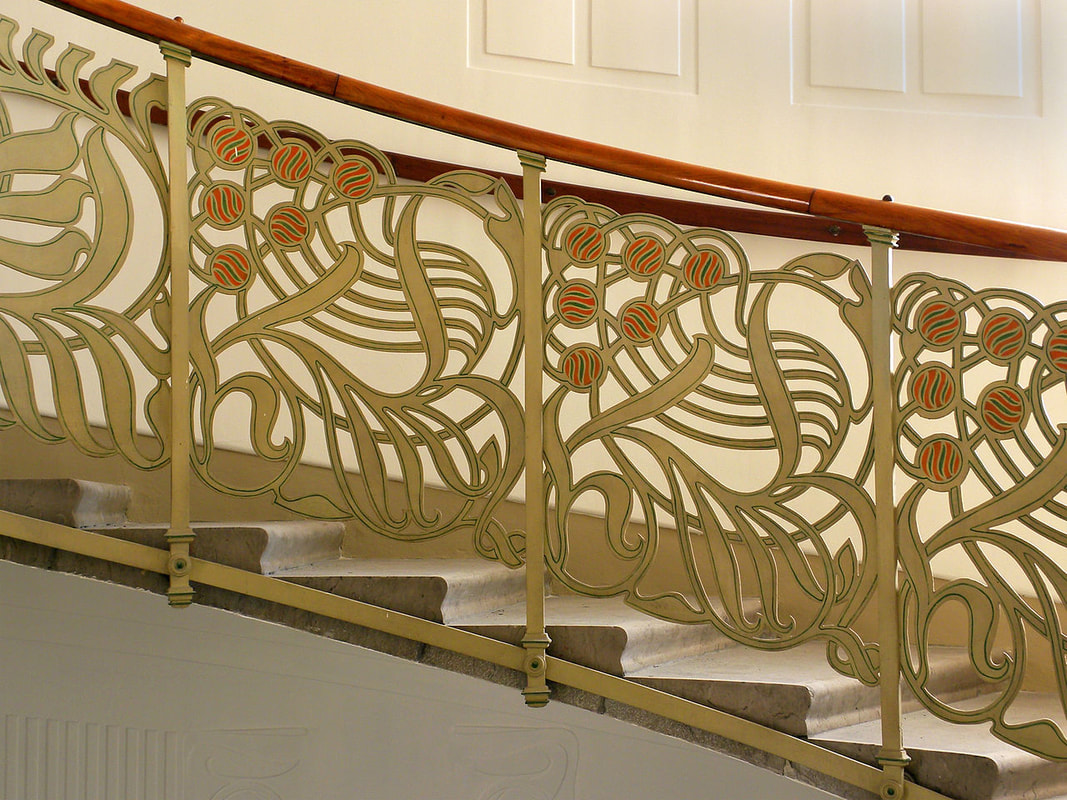History & Practice: End of the 19th Century - Differences Within Art Nouveau Across Europe13/10/2019 Art Nouveau is a decorative art style that developed around the 1890s as a rebellious counter-culture, rejecting the established academic arts' convention towards art and design. Art Nouveau was the new-hotness hitting the European art stage with flowing curves, unified design aesthetics, and dynamic forms inspired by nature. Art Nouveau ("New Art" in French) spread from France and developed unique aspects as different European countries' culture influenced their art and design. Glasgow - Scotland
The Glasgow style of art nouveau seems to have developed alongside the constraints of architecture, as such the designs are limited within relatively standard forms present on buildings. There are no impractically decorative elements included in the Glaswegian style of art nouveau, yet the decorations that are present have the nature-inspired flowing design that is common in traditional art nouveau. As the Glasgow style of art nouveau developed, it became more geometrically focused. This revolving bookshelf has no natural-looking curves, it is entirely geometric in its aesthetic. This trajectory of development would lean into the Arts & Crafts movement. Madrid - Spain
Madrid's Art Nouveau style is considerably more nature-centric when compared to the geometric themes of Glasgow's style. Floral features and organic curves are present in almost all aspects of Madrid's style, depicted in plaster, iron, and glass decorations. Nancy - France
Nancy's Art Nouveau style combines several materials made more accessible due to growing industry within the region into decorative architecture. Iron and wood works provide a façade for panes of glass, clear or decorated. These fronts silhouette plant-like structures from the inside of a building, while also containing a more detailed face that projects outward. Vienna - Austria
There is a clear disconnect between decorative elements and practical elements of Viennese Art Nouveau constructs. However, the decorative elements seem to be more lavish in their aesthetic, golden elements feature prominently leaving some of the less shiny assets in the design go unnoticed.
0 Comments
Leave a Reply. |
Author:Elliot Watson, Illustrator with a background in historical swordsmanship and all the weird and wonderful trappings that entails. Archives
November 2021
Categories |
Site powered by Weebly. Managed by 34SP.com



















 RSS Feed
RSS Feed